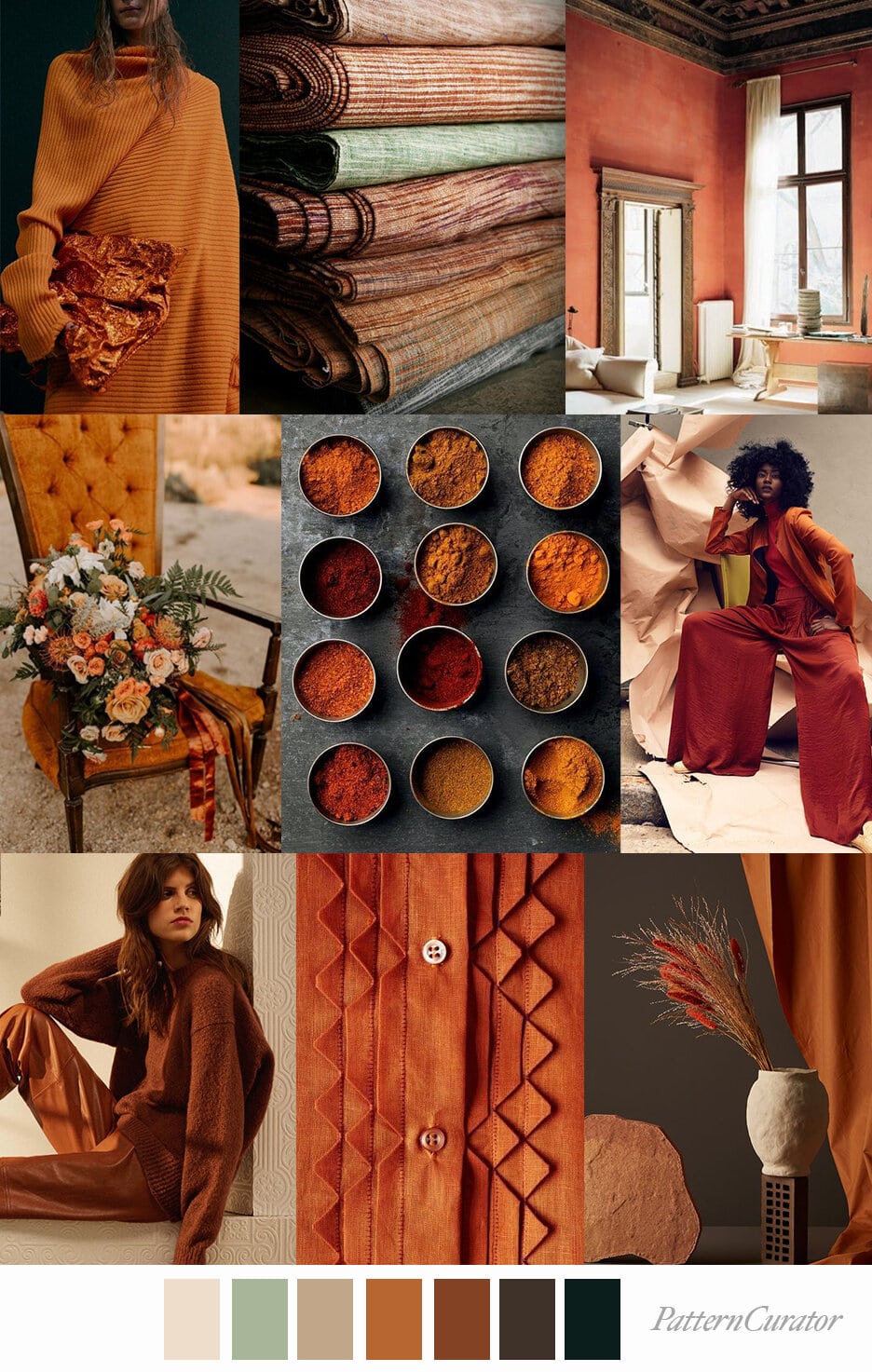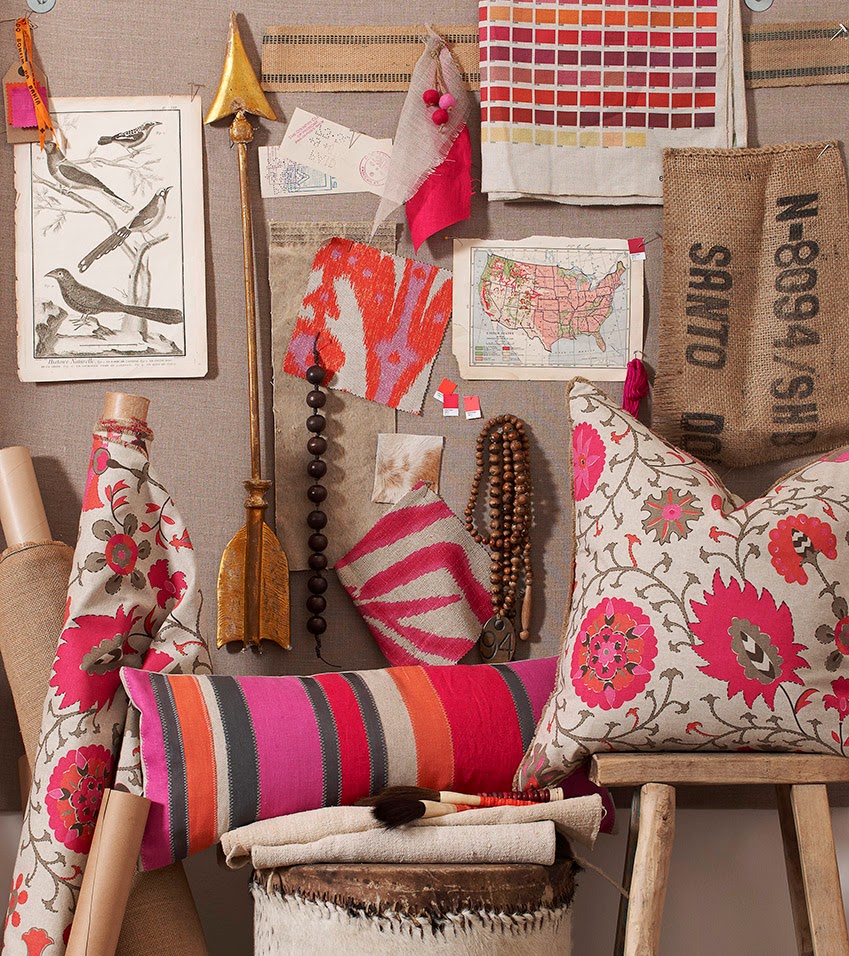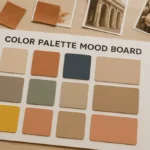
Fashion garment
In fashion, the word “garment” means any piece of clothing or accessories made for people to wear. By definition, a garment is an item designed to cover, protect, or adorn the body, typically made from fabric or other materials. This includes things like shirts, pants, dresses, jackets, and even accessories like scarves and hats. Garments are the results of the creative process in fashion design and production.
Additionally, the fashion industry involves the conceptualization, design, production, marketing, and retailing of garments. These processes span multiple industries, including textile manufacturing, apparel production, and retail, all of which play significant economic roles globally. Designers and fashion houses work to create unique and stylish garments that reflect current trends, cultural influences, and personal expression. The process of bringing a garment from concept to market involves careful consideration of factors such as fabric selection, pattern making, sewing techniques, embellishments, and overall design aesthetics. The choice of material is crucial, as it determines the quality, comfort, and function of the finished product, while textiles serve as the foundational element in garment creation.
In addition to being functional items of clothing, garments in the fashion industry often serve as cultural artefacts, expressing social, economic, and cultural trends. The whole garment industry also continually evolves, driven by changing consumer preferences, emerging designers, and innovations in materials and manufacturing processes. These industries are interconnected, with textiles providing the raw materials and garments representing the finished products, each playing distinct roles in the supply chain and broader economy.
Understanding the term “garment” within the context of the fashion industry involves recognizing its role as a key component in the complex and dynamic world of fashion, where creativity, craftsmanship, and consumer demand intersect to shape the way we dress and express ourselves. Garments also influence personal appearance, helping individuals project their desired image and style.
The word “garment” comes from the Old French ‘garnement’ and is related to the word ‘equip,’ reflecting its roots in furnishing or adorning the body with clothing.
Define Garment
Simply put, a garment is any clothing worn on the body, ranging from simple T-shirts to elaborate couture dresses. ‘Garment’ is a synonym for words like clothing, apparel, and attire. The formal definition of a garment is an item made from fabric or textile, designed to be worn on the body. Beyond just covering the body, a garment is a way to express personal style, culture, and societal norms. There is a difference between the terms ‘garment,’ ‘clothing,’ and ‘textile’: while a garment is a finished item worn on the body, ‘clothing’ is a broader term for what people wear, and ‘textile’ refers to the material used to make garments.
It’s not just about function. It serves aesthetic and symbolic purposes, playing a central role in how people present themselves to the world.
Garments are more than just clothes; they’re a significant aspect of human existence and self-expression. Garments are used to clothe the body, providing both protection and a means of communication. Linguistically, ‘garment’ is a noun, while the related verb is ‘to clothe,’ which comes from the Old English and is used to describe the act of dressing or covering with garments.
Garment Classification and Types
Garment classification is a fundamental aspect of the garment industry, helping both companies and consumers navigate the vast world of clothing and apparel. In the context of garment factories and retailers, classifying garments allows for better organization, marketing, and understanding of the different types of clothing available in the market. Garments can be grouped in several ways—by their intended use, the season they are worn, the type of fabric or fiber used, the method of production, or even the part of the body they cover.
For example, garments are often categorized as formal or casual attire, depending on the occasion and the level of sophistication required. A suit or dress might be considered formal, while shirts, pants, and jackets can range from casual to business wear. Similarly, clothing can be classified by season, such as winter coats and jackets made from wool or heavy fabrics, or summer dresses and shirts crafted from lightweight linen or cotton. The garment industry also distinguishes between garments based on their construction—woven or knitted fabrics, natural or synthetic materials, and the specific patterns or cuts used in their design.
The word “garment” itself has a rich history, originating from the Middle English term derived from Old French “garnement,” meaning ‘equipment’ or ‘adornment.’ Today, the terms garment, clothing, apparel, attire, and dress are often used interchangeably to refer to any piece of clothing worn on the body. Each type of garment—be it a shirt, pair of pants, coat, or dress—serves a unique purpose and is designed with specific features in mind.
Understanding garment classification is essential for retailers and companies in the garment industry, as it helps them cater to diverse consumer needs and preferences. For consumers, knowing the different types of garments and their intended uses makes it easier to select the right piece for any occasion. Whether you’re shopping for a formal suit, a casual shirt, or a protective coat, garment classification ensures you find exactly what you need in the world of fashion and apparel.
The Journey Begins: Conceptualization
The process of creating a garment starts with a spark of inspiration. Designers draw upon diverse sources, such as art, nature, historical periods, or societal movements, to conceptualize their vision. This initial phase involves sketching, mood boards, and the exploration of fabrics and textures. So, the goal is to translate abstract ideas into tangible designs that can be transformed into a wearable piece—a journey that takes place from concept to creation.
This stage is crucial as it sets the foundation for the entire design process and influences the overall identity of the garment. Here are key aspects involved in the conceptualization of a fashion garment:
- Inspiration and Research: Designers draw inspiration from various sources such as art, nature, history, culture, or contemporary trends. Extensive research helps designers understand the context, cultural references, and potential themes related to their inspiration. Through this research, designers learn about new trends, techniques, and cultural references that can influence their creative direction.
- Mood Boards and Sketching: Designers often create mood boards to visually represent the theme or concept, incorporating images, textures, colours, and fabric samples. Sketching allows designers to translate their ideas into visual representations, exploring different silhouettes, shapes, and design elements. This process also helps designers discover new styles and creative possibilities that may not have been initially considered.

- Theme Development: Establishing a cohesive theme or concept is essential for creating a collection or individual garment that tells a story or communicates a specific idea. The theme guides decisions regarding colour schemes, fabric choices, and overall design elements.
- Innovative Design Elements: Conceptualization often involves thinking outside conventional boundaries, incorporating innovative design elements, cuts, or embellishments that align with the theme. Experimentation with new techniques or unconventional materials may be part of this phase.
- Cultural and Social Considerations: Designers may integrate cultural or social aspects into the conceptualization, creating garments that reflect or comment on specific cultural contexts or societal issues.
- Target Audience and Market Trends: Considering the target audience and staying aware of current market trends ensures that the conceptualized garment aligns with consumer preferences. So, balancing creative expression with commercial viability is crucial for success in the garment industry.
- Storytelling through Design: Some designers focus on telling a story through their garments. Each element, from colour choices to specific design details, contributes to the narrative. The concept of storytelling through design adds depth and meaning to fashion, fostering a connection between the designer, the garment, and the wearer. It allows fashion to transcend its functional purpose and become a vehicle for self-expression, cultural representation, and even social commentary. Whether conveying a sense of nostalgia, celebrating diversity, or addressing contemporary challenges, storytelling through design enriches the fashion landscape, turning clothing into a medium for artistic expression and storytelling.
- Iterative Process:Fashion design is like a continuous cycle of creativity and refinement. It’s an evolving process where designers keep making improvements from the initial idea to the final product. This approach allows for constant exploration, and adapting to new influences. Designers go through a cycle of brainstorming ideas, creating prototypes, testing them out, and then refining them until the garment matches their vision, meets quality standards, and connects with the people they’re designing for. It’s a dynamic and ongoing journey to create the best possible clothing.
Overall, successful conceptualization lays the groundwork for the subsequent stages in the garment industry, guiding decisions in construction techniques, and finishing touches. It is the imaginative phase where the designer’s creativity takes shape, and the initial idea transforms into a visual representation of wearable art.
Fabric Selection: The Foundation of a Garment Industry
Fabric selection is a crucial step in garment creation, serving as the cornerstone of the entire design. It significantly influences the garment’s aesthetics, comfort, durability, and functionality. The choice of fabric contributes to the garment district’s overall look and feel. It impacts factors like the garment’s seasonality, drape, and structure.
Accurate measurement is essential when selecting fabric, as it ensures the right amount and fit for garment construction, directly affecting the final quality and comfort. There are many examples of fabrics used in garment making, such as cotton, silk, wool, and synthetic fibers. Some fabrics, like wool and leather, are derived from animals, with leather being a durable material commonly used for clothing and accessories.
Additionally, it affects the comfort of the outer garment consisting of the wearer, making considerations for breathability and flexibility vital. Durability, color retention, ethical sourcing, and cost are also essential factors. In essence, fabric selection is the foundation upon which the garment’s design and quality are built.

Pattern Making and Cutting
Pattern making and cutting are integral processes in the garment industry that bridge the conceptualization of a garment with its physical creation. Once the design is finalized, pattern-making involves creating templates that serve as blueprints for the various components of the garment. This precision is critical as it directly influences the fit and structure of the final product.
Subsequently, one-piece garment the fabric is cut based on these patterns, laying the groundwork for the garment’s construction. The accuracy of cutting is paramount to ensure each piece aligns seamlessly during assembly. This phase sets the stage for the meticulous craftsmanship that transforms a flat piece of fabric into a three-dimensional, wearable garment. In essence, pattern making and cutting are the technical foundations that bring the designer’s vision to life in the physical form of a garment.
The Art of Construction: Sewing and Assembling
Sewing is the soul of garment construction, where the pieces of fabric come together to form a cohesive whole. Skilled artisans, often working with sewing machines or by hand, meticulously stitch each seam, ensuring proper alignment and seam allowance. The assembly process of other garments may involve various techniques such as pleating, gathering, or draping, depending on the design. Some garments are specifically designed to protect the body from environmental factors or hazards. This stage is where the garment begins to take shape and transforms the outer garment from a concept into a tangible piece.

Garment construction
Role of Garment Factories
Garment factories are the driving force behind the production of clothing and apparel in the global garment industry. A garment factory is a specialized manufacturing facility where skilled workers and advanced machinery come together to transform raw materials, fabrics, and textiles into finished garments ready for retail. These factories are essential for turning design concepts into tangible products that can be worn, sold, and enjoyed by people around the world.
The process within a garment factory typically begins with the design phase, where patterns are created and materials are selected. Next comes the cutting stage, where fabrics are precisely cut according to the patterns, ensuring each piece fits together perfectly. Skilled workers then sew and assemble the garments, using a variety of techniques to create everything from casual shirts and pants to formal dresses, jackets, and coats. The finishing stage involves adding details such as buttons, zippers, and labels, as well as performing quality checks to ensure each garment meets industry standards.
Garment factories utilize a range of production methods, including weaving, knitting, and sewing, to accommodate the diverse needs of the garment industry. They produce a wide array of clothing, from everyday attire to specialized formal wear, catering to the demands of retailers and consumers alike. The efficiency and expertise of garment factories make them indispensable to the industry, enabling companies to produce high-quality garments at scale.
Beyond production, garment factories play a significant role in the economy by providing employment opportunities and supporting local communities. They are found in countries around the world, each contributing unique skills and styles to the global market. The finished garments produced in these factories are then sold through various retail channels, making their way into stores and online platforms where consumers can purchase and wear them.
In summary, garment factories are at the heart of the garment industry, responsible for bringing clothing designs to life and ensuring that high-quality garments are available for people to wear, no matter where they are in the world. Their essential role in production, innovation, and economic development makes them a cornerstone of the fashion and apparel sector.
Embellishments and Finishing Touches
Embellishments and finishing touches are like the magic that turns a piece of clothing into a true masterpiece. Designers pay close attention to details like embroidery, beads, buttons, zippers, or other decorative elements to make the garment look even more appealing.
These additions tell a story and give a personal touch to the design. Choosing where and how to add these embellishments is crucial, as they bring depth and character, often reflecting cultural or personal meanings. After all embellishments are applied, ironing is an important finishing step that ensures the garment has a smooth and polished appearance. These final touches result in a complete and refined garment, highlighting the careful craftsmanship and attention to detail that defines top-notch fashion.
Garment Fitting and Alterations
The journey from concept to closet involves multiple iterations to achieve the perfect fit. Fitting sessions with models or dress forms allow designers to assess the garment’s proportions, silhouette, and comfort. Adjustments and alterations are made as needed. A well-fitted garment not only aligns with the designer’s vision and meets the expectations of the wearer, but also enhances the wearer’s status and personal image by presenting a polished and confident appearance.
Quality Assurance and Ethical Considerations
As the garment nears completion, quality assurance becomes paramount. Inspections for stitching quality, fabric integrity, and overall craftsmanship help maintain high standards. Additionally, ethical considerations for protective garment make, such as sustainable sourcing of materials and fair labor practices, have gained prominence in the garment industry. Choosing ethical practices can help save resources and protect the environment. It is also important to consider the country of origin when evaluating ethical sourcing and labor practices, as standards and regulations can vary widely. Overall, designers and consumers alike are increasingly mindful of the environmental and social impact of garment production.

Fashion quality assurance
The Path to the Closet: Marketing and Retail
The culmination of the garment creation process involves bringing the garment-worn design to the consumer. Retailers often market garments as part of a coordinated outfit, encouraging consumers to purchase a complete look. Specific articles of clothing, such as suits, skirts, trousers, and shorts, are marketed for different occasions and consumer needs. For example, suits have been worn historically in formal settings and ceremonies, while skirts have been worn in various cultures as symbols of status or tradition.
Marketing strategies, branding, and retail channels play a crucial role in making these garments accessible to the target audience, who are interested in wearing them for formal events, casual outings, or as nightwear — garments specifically intended for use at night. Whether it’s through traditional brick-and-mortar stores or online platforms, the garment embarks on its final journey from the designer’s studio to the consumer’s closet.
Conclusion
To sum up, from its conceptualization to the final destination in the closet, a garment is a result of a complex and intricate process that merges artistry, functionality, and cultural influences. Each stage, from selecting fabrics to the finishing touches, contributes to the garment’s unique identity. So, as consumers, understanding the elements that define garments allows us to appreciate the craftsmanship behind the clothes we wear. It fosters a deeper connection with the artistry that transforms loose garments from a mere concept into a cherished piece in our closets.




